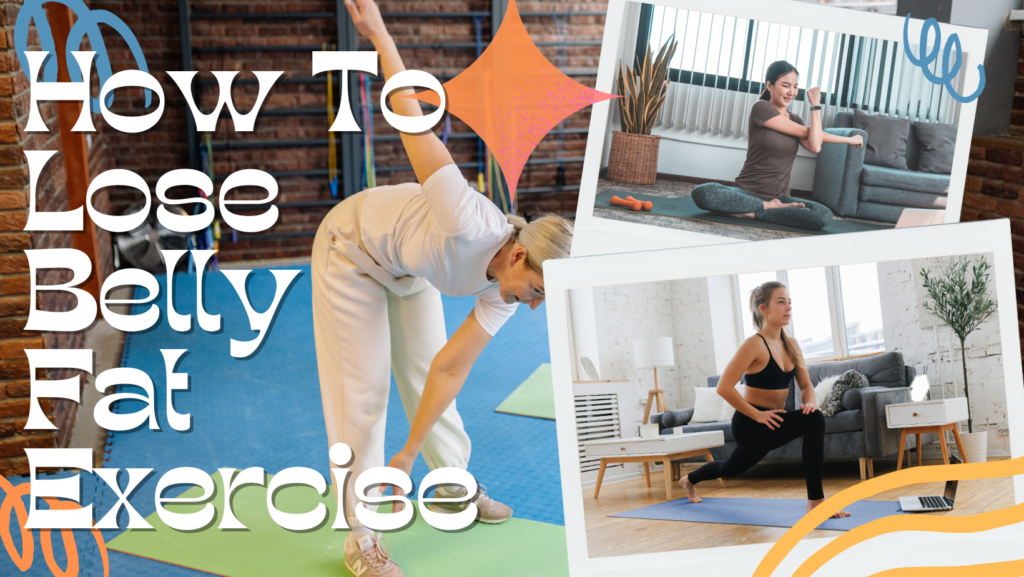Are you wondering if it’s possible to combine cardio and strength training into one workout? Many people often separate these two types of exercise, thinking they cannot be done simultaneously. However, the good news is, you can indeed incorporate cardio and resistance training into a single workout session. By carefully designing your routine and being mindful of the intensity and duration of each exercise, you can reap the benefits of both cardio and strength training, all in one efficient and effective workout. So, let’s explore how you can achieve your fitness goals by combining these two forms of exercise.
Can cardio and workout be done together?
Doing cardio and workouts together is not only possible but also beneficial for overall fitness and health. By combining these two types of exercise, you can maximize the benefits of both and achieve your fitness goals more effectively. However, before diving into a cardio and workout combination, there are several factors you should consider and different types of cardio exercises that can be incorporated into workouts. In this article, we will explore the advantages of combining cardio and workouts, the factors to consider before doing so, and the various types of cardio exercises that can be integrated into your workout routine. Additionally, we will provide tips for an effective cardio and workout combination, highlight common mistakes to avoid, and present sample combinations for inspiration. Lastly, we will discuss the potential risks and precautions to be aware of when engaging in this type of exercise regimen.
The benefits of combining cardio and workouts
When you combine cardio exercises with your regular workout routine, you can reap numerous benefits that contribute to your overall fitness and well-being.
Increased calorie burn
One of the primary advantages of incorporating cardio into your workouts is the increased calorie burn. Cardio exercises, such as running, cycling, or jumping rope, elevate your heart rate and help you burn more calories. When combined with strength training exercises, which also contribute to calorie burning, the overall calorie expenditure can be significantly higher. This combination can be particularly beneficial if weight loss is one of your goals.
Improved cardiovascular health
Cardio exercises primarily focus on improving your cardiovascular health. By engaging in activities that get your heart rate up, you strengthen your heart and improve its efficiency, leading to a healthier cardiovascular system. When you combine cardio with workouts that target muscle strength and endurance, you create a comprehensive fitness routine that benefits both your heart and your muscles.
Enhanced muscle strength and endurance
While cardio exercises primarily target cardiovascular health, workouts focus on building muscle strength and endurance. When you combine the two, you can enhance these aspects even further. For example, incorporating resistance training into your cardio routine can help build muscle and increase your strength. Additionally, combining cardio with bodyweight exercises or circuit training challenges your muscles, improving their endurance and overall tone.
Factors to consider before combining cardio and workouts
Before jumping into a cardio and workout combination, it’s essential to consider several factors that will help you create a successful and sustainable fitness routine.
Fitness level and goals
Consider your current fitness level and the goals you want to achieve through your exercise routine. If you are new to fitness or have specific goals, such as building muscle or improving cardiovascular endurance, determine how cardio and workouts can complement each other to help you reach those goals effectively. Assessing your fitness level can also help you determine the appropriate intensity and duration of your workouts.
Time availability
Another crucial factor to consider is the time you have available for your exercise regimen. Assess your daily schedule and determine how much time you can dedicate to both cardio and workouts. Combining cardio with workouts can be time-efficient if planned effectively, as you can target different aspects of fitness within a single session. However, ensure you have enough time to perform both adequately without feeling rushed or compromising the quality of your exercises.
Appropriate scheduling
Scheduling your workouts and cardio sessions is essential for optimal results and preventing overtraining or burnout. Plan your routine in a way that provides sufficient rest and recovery between sessions to allow your muscles and cardiovascular system to adapt and grow stronger. Additionally, consider your energy levels throughout the day and schedule your workouts and cardio sessions when you are most likely to feel energized and motivated.
Balancing intensity and recovery
Finding the right balance between intensity and recovery is crucial when combining cardio and workouts. While challenging yourself is important for progress, overdoing it can lead to fatigue, increased risk of injury, and hinder your progress. It is essential to listen to your body and incorporate adequate rest days to allow for proper recovery. Adjust the intensity of your workouts and cardio sessions based on how your body feels and gradually increase intensity and duration over time.
Types of cardio exercises that can be combined with workouts
There are various types of cardio exercises that can be seamlessly combined with workouts, allowing you to create a balanced and effective fitness routine. Here are some popular options:
Interval training
Interval training involves alternating between high-intensity bursts of exercise and short rest periods. This type of cardio is excellent for boosting cardiovascular fitness and calorie burning. You can incorporate interval training into your workouts by adding intervals of high-intensity cardio exercises, such as sprinting or jump squats, between sets of strength training exercises.
Circuit training
Circuit training involves moving from one exercise to another with minimal rest in between. It combines cardiovascular and strength training into a single session, making it an efficient way to get both types of exercise. You can create a circuit routine that includes a combination of cardio exercises, such as jumping jacks or mountain climbers, along with strength training exercises like push-ups or lunges.
Group fitness classes
Participating in group fitness classes, such as dance-based workouts or boot camps, can provide an immersive cardio experience while incorporating strength training exercises. These classes often have a mix of aerobic exercises and resistance training, providing a balanced and fun workout environment.
Cardio machines
Popular cardio machines, such as treadmills, stationary bikes, or ellipticals, can be utilized in combination with workouts. Start or end your strength training sessions with a cardio workout on these machines to elevate your heart rate and burn additional calories. Alternatively, you can split your workout sessions, dedicating some days to cardio-only workouts while others focus on strength training.
Outdoor activities
If you prefer to exercise outdoors, activities like running, cycling, or hiking can also be combined with workouts. Incorporate bodyweight exercises or resistance bands into your outdoor sessions to engage your muscles while enjoying the fresh air and natural surroundings.
Tips for effective cardio and workout combination
To ensure an effective and enjoyable cardio and workout combination, consider the following tips:
Warm-up before starting
A proper warm-up is essential before engaging in any exercise. It prepares your muscles, joints, and cardiovascular system for the upcoming workout. Spend at least five to ten minutes performing dynamic stretches or light cardio, such as jogging in place or jumping jacks, to increase blood flow and warm up your muscles.

Consider high-intensity interval training
High-intensity interval training (HIIT) can be a beneficial addition to your cardio and workout combination. By incorporating short bursts of intense exercise into your routine, followed by brief recovery periods, you can maximize calorie burn, improve cardiovascular fitness, and enhance your overall endurance. Experiment with different HIIT workouts and find the ones that suit your fitness level and goals.
Incorporate strength training exercises
Don’t neglect the importance of strength training when combining cardio and workouts. Strength training exercises help improve muscle tone, increase metabolism, and support overall body strength. Include a variety of resistance exercises, such as squats, lunges, and push-ups, in your routine to target different muscle groups and promote balanced development.
Listen to your body
Pay attention to your body’s signals and adjust your exercise intensity accordingly. Push yourself, but also be mindful of your limits. If you experience pain or extreme fatigue during a workout, it’s essential to take a step back and modify the exercise or rest if necessary. Your body needs time to adapt and recover to avoid injuries and burnout.
Stay hydrated
Proper hydration is crucial during any physical activity. Drink enough water before, during, and after your workouts to prevent dehydration. Keep a water bottle handy and take regular sips throughout your cardio and workout sessions to maintain optimal hydration levels.
Balance cardio and rest days
While combining cardio and workouts can be highly beneficial, it’s equally important to include rest days in your routine. Rest days allow your body to recover, repair muscle tissues, and prevent overtraining. Aim for at least one to two rest days per week, depending on your fitness level and the intensity of your workouts.
Consult a fitness professional
If you are new to combining cardio and workouts or have specific fitness goals, seeking guidance from a fitness professional can be highly beneficial. They can assess your fitness level, help you create a personalized routine, and ensure you’re performing exercises with proper form and technique. A fitness professional can also provide guidance on appropriate training volumes, intensity levels, and progressions.
You May Also Like
Common mistakes to avoid
There are some common mistakes to be aware of and avoid when combining cardio and workouts:
Overtraining
Pushing your body beyond its limits without allowing enough time for recovery can lead to overtraining. Overtraining can negatively impact your performance, increase your risk of injuries, and hinder your progress. Incorporate rest days, listen to your body, and ensure you have a well-rounded routine that includes proper recovery.
Neglecting proper form
Maintaining correct form during exercises is essential for maximizing results and preventing injuries. Improper form can put excessive strain on your joints and muscles, leading to discomfort and potential long-term damage. Ensure you learn and practice proper form for all exercises and consider working with a fitness professional to get guidance and corrections.
Ignoring rest and recovery
Rest and recovery are essential components of any successful fitness routine. Failing to include rest days can lead to fatigue, decreased performance, and increased risk of injuries. It’s during rest and recovery periods that your body adapts and grows stronger. Prioritize rest alongside your workouts to allow for proper rejuvenation.
Not adapting the routine
Your fitness routine should be adaptable and evolve with your progress. As you become stronger and more conditioned, it is crucial to adjust the intensity, duration, and types of exercises to continue challenging your body. Failing to adapt your routine can lead to a plateau in your progress and decreased motivation. Regularly assess and adjust your routine to ensure consistent growth and improvement.
Sample cardio and workout combinations
To provide inspiration, here are a few sample combinations of cardio and workouts:
Running and bodyweight exercises
Start your workout session with a 10-minute run to get your heart rate up. Follow it up with bodyweight exercises like squats, push-ups, lunges, and planks. Alternate between short bursts of running and sets of bodyweight exercises for a dynamic and effective workout.
Cycling and resistance training
Begin your workout with a 20-minute cycling session on a stationary bike to engage your lower body and elevate your heart rate. Transition into resistance training exercises using dumbbells or resistance bands, targeting different muscle groups such as shoulders, chest, and legs. Alternate between cycling and strength training exercises for a well-rounded workout.
Jump rope and core workouts
Jumping rope is an excellent cardio exercise that also engages your core muscles. Start with a 5-minute jump rope session to warm up. Then, move on to core workouts such as planks, Russian twists, or bicycle crunches. Incorporate short jump rope intervals between sets of core exercises for an intense and effective workout.
Swimming and circuit training
Swimming is a low-impact cardio exercise that works your entire body. Begin your routine with a 15-minute swim, focusing on various strokes and intensities. Afterward, perform circuit training, incorporating exercises such as kettlebell swings, medicine ball slams, and burpees. Alternate between swimming and circuit training exercises to challenge your cardiovascular system and build strength.
Potential risks and precautions
Although combining cardio and workouts can offer numerous benefits, it’s important to be aware of potential risks and take precautions to ensure your safety and well-being.
Injuries due to overexertion
Pushing yourself too hard or engaging in exercises beyond your current capabilities can lead to injuries. Start slowly and gradually increase the intensity and duration of your workouts. Incorporate proper warm-ups, cooling-down, and stretching exercises to reduce the risk of injuries.
Cardiovascular strain
Intense cardio exercises, such as high-intensity interval training or endurance running, can place a significant strain on your cardiovascular system. If you have any pre-existing medical conditions or concerns related to your cardiovascular health, it is crucial to consult with your healthcare provider before engaging in intense cardio and workouts.
Excessive fatigue
Overdoing your workouts without adequate rest and recovery can result in excessive fatigue. Listen to your body’s signals and provide sufficient rest days between intense sessions. Aim for quality sleep, proper nutrition, and hydration to support your recovery and replenish your energy levels.
Joint and muscle strain
Improper form, excessive load, or lack of proper warm-up can lead to joint and muscle strain. Ensure you learn and practice proper technique for all exercises, use appropriate weights or resistance, and warm up adequately before engaging in intense workouts. Additionally, consider incorporating flexibility and mobility exercises to maintain joint health and prevent stiffness.
Conclusion
Combining cardio and workouts can be an effective and efficient way to achieve your fitness goals, improve cardiovascular health, and enhance muscle strength and endurance. By considering factors such as fitness level, time availability, and appropriate scheduling, you can create a well-rounded routine that maximizes the benefits of both types of exercise. Incorporating different types of cardio exercises, such as interval training, circuit training, group fitness classes, cardio machines, or outdoor activities, can add variety and excitement to your workouts. It is essential to follow tips for an effective cardio and workout combination, avoid common mistakes, and always prioritize safety by listening to your body, consulting professionals when needed, and taking necessary precautions. With a balanced approach and proper consideration, you can enjoy the numerous benefits of combining cardio and workouts while minimizing any potential risks. Keep pushing yourself, stay consistent, and enjoy the journey toward a healthier and fitter you.




